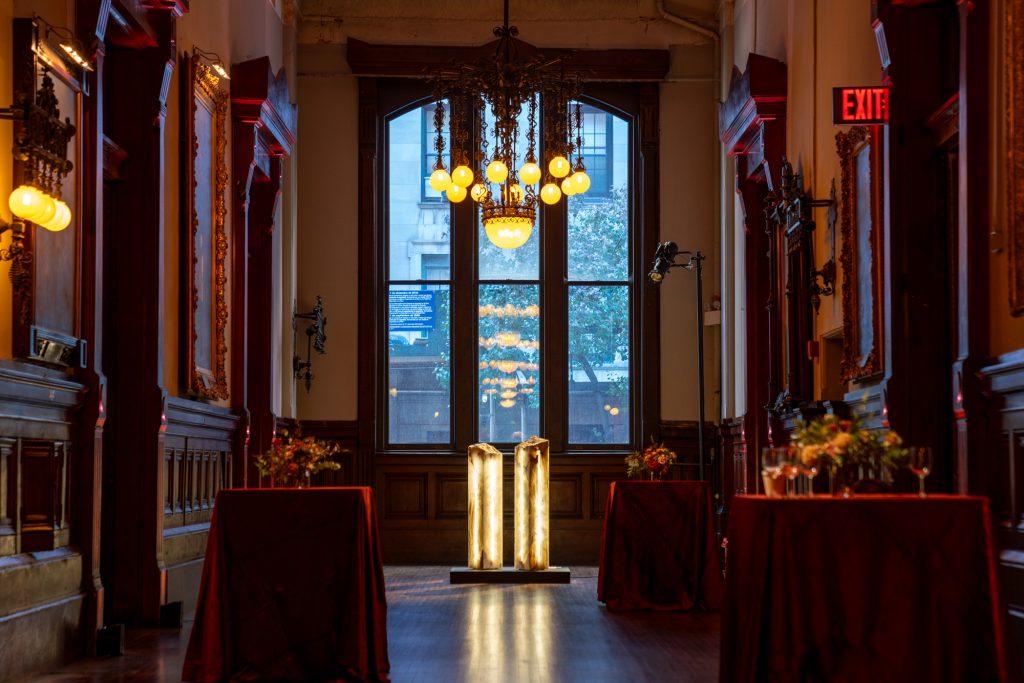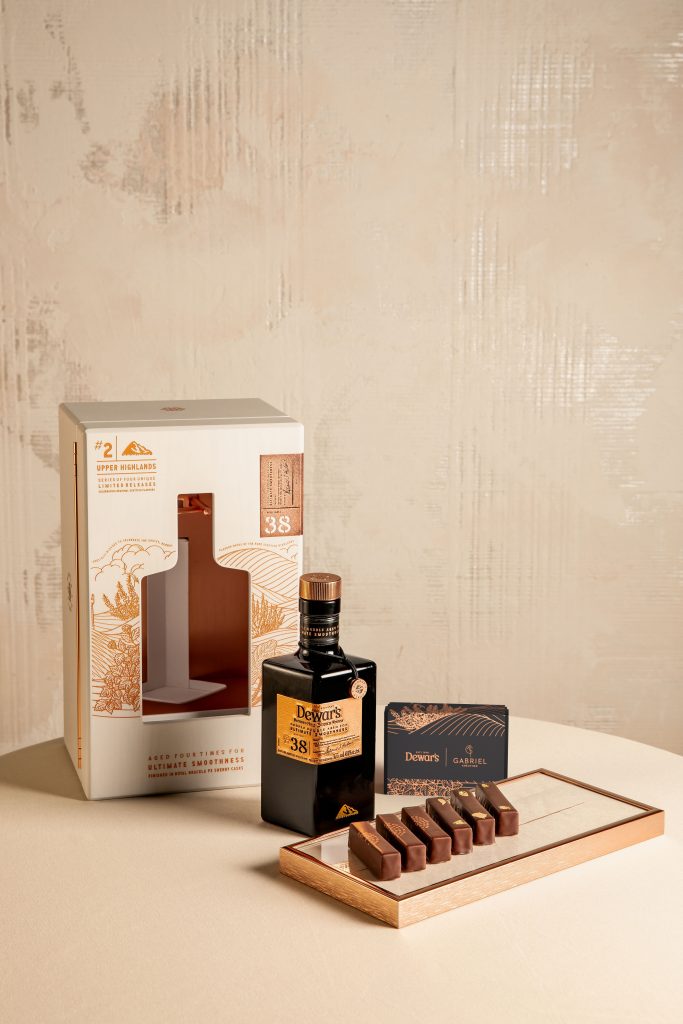Interview: Brian Nation of Midleton Distillery
The Master Distiller on the importance of teamwork and what makes Redbreast 21-Year-Old whiskey special


During a recent tasting of the components that make up the newest bottling from Irish whiskey Redbreast 21, Brian Nation was thrilled about his new position as Master Distiller of the Midleton Distillery. Nation now fills the shoes that were worn by Barry Crockett, who took the reigns from his father almost 50 years ago. Now Nation helms the distillery that makes respected tipples for Jameson, Powers, Midleton, Green Spot and Redbreast.
The Redbreast 21 is a stunner; the combination of a first-fill sherry and a refill bourbon cask from 1985, along with a refill bourbon cask from 1991 and another from 1992. Each component highlights the nose, flavors and finish of each while revealing the fusion that takes on its own character—and a little magic. Aromas of dried fruit and nuts lead to the taste of sherry, spice, fruit and a smooth and creamy feel. The flavor lingers; a little spicy and nutty.

Nation kindly took the time to share his thoughts with CH about his new role in Midleton, the importance of teamwork in whiskey-making and why he is so proud to share the Redbreast 21 with the world.
When you were a young boy, did you imagine you would one day have a job making and tasting whiskey every day?
Definitely not. When I was a young boy my sights were set on becoming an astronaut—a far cry away from making whiskey! In college I did chemical and process engineering and would have assumed that I would end up working in a pharmaceutical plant, but having tried that, I didn’t enjoy it. Then in 1997 an opportunity arose at the distillery in Midleton and the rest—as they say—is history.
Now that you have taken over for Barry Crockett, how do you approach honoring the legacy of his work?
Taking over from Barry Crockett is both a huge honor and a daunting task. Considering that his father was master distiller before him, they have been effectively the gate-keepers of single-pot still Irish whiskey for over 70 years. It is really thanks to them that single-pot still Irish whiskey is still around today. Barry’s dedication to Midleton and the craft of distilling was second to none. My approach to his legacy is to carry on the tradition with the same dedication and attention to detail that Barry has instilled in me over the last 10 years we spent working together.

Have you changed anything at the distillery since you became the master distiller?
There is a very true saying in all walks of life: if it isn’t broken, then don’t fix it. My main aim is to continue on from where Barry left off; working with the great team we have at Midleton and continuing to create whiskeys of the finest quality. We are in the lucky position in Midleton, since the completion of the expansion to now have additional capacity from which we will be able to play a few different tunes with the pot stills and possibly produce different styles of pot distillates. This is change, as for the last 10 years we have been under pressure to produce to the plant’s maximum capacity and did not have much opportunity to experiment.
Can you describe a typical day at the distillery?
The best part of working in a distillery is that every day is different. Some days are spent working with the production team; monitoring the progress of distillations, adjusting cut points and sampling the new make spirit. Other days it’s working with the maintenance team; troubleshooting problems and looking for ways to optimize throughput. There are days spent in brewing and fermentation. Then there are days when you are bringing people through the distillery, explaining the process and the history and heritage behind each of our brands. Most days it’s a mix of all four. Every day at the distillery is busy and interesting.

How do you coordinate with Dave Quinn and Billy Leighton (Master of Whiskey Science and Master Blender at Jameson, respectively) to make sure all of the whiskies taste the way you want?
The importance of teamwork in a distillery cannot be overemphasized. We are very lucky at Midleton Distillery to have a very dynamic workforce who are all passionate about what they do and all proud to carry on the traditions and heritage of people gone before them. As part of this team, Billy, Dave and myself work very closely together looking at the range of whiskey types that are available, their ages and their cask profiles, to see how they best fit together in order to give the range of whiskey styles that we want.
How is the process of making triple-pot still whiskey in Ireland different than making whiskey in other countries?
Traditional pot still whiskey is the quintessential style of Irish whiskey. The combination of barley, unpeated malted barley and triple distillation gives a unique whiskey style that Ireland has become rightly famous for. The use of barley in the mash bill imparts a creamy mouthfeel on all of our whiskeys and the triple distillation process brings to the fore the pot still spicy character as well as ensuring the smoothness of all of our whiskeys.

You recently launched the Redbreast 21—it’s pretty spectacular. What did you hope to achieve with the tasting of the components before we tasted the 21 together?
The idea behind doing the component tasting before finally tasting Redbreast 21 was really to highlight the dominant flavors and characteristics that each of the components possessed on their own and to explain whether these flavors or characteristics were distillate driven or maturation driven. I feel it also showcased the craft of our Master Blender, Billy Leighton and his ability to take these pot still components and put them together in the correct proportions to produce a single pot still Irish whiskey as exquisite as Redbreast 21. I think it also highlighted that the final whiskey contains additional flavors and characteristics that were not necessarily evident in the individual components.
Why do you think Redbreast has such a cult following?
The volumes are small, so it is not very widely available. Those who have tasted Redbreast and have had the opportunity to experience its delights are happy to share with close friends but would also like to keep it as their “whiskey secret.”
How does the sherry cask maturation add to the character of Redbreast?
The significant sherry cask maturation with Redbreast is key to its overall flavor. We put a huge amount of time and effort into ensuring the consistency of the sherry cask contribution. Our master of maturation and wood and our master blender choose the wood that is used to raise the casks and then the Oloroso Sherry that is matured in the casks before they come home to us in Midleton. This allows us to control the flavor contribution and ensure the consistency of each cask. The Christmas cake flavors are due to a combination of a particular style of pot still whiskey and the sherry seasoned Spanish oak and time in cask.
Redbreast 21-Year-Old is non-chill filtered and is available in the US as of 1 March 2014 in very limited quantities with the suggested retail price of $230.
Product photo by David Graver, all others courtesy of Midleton Distillery












